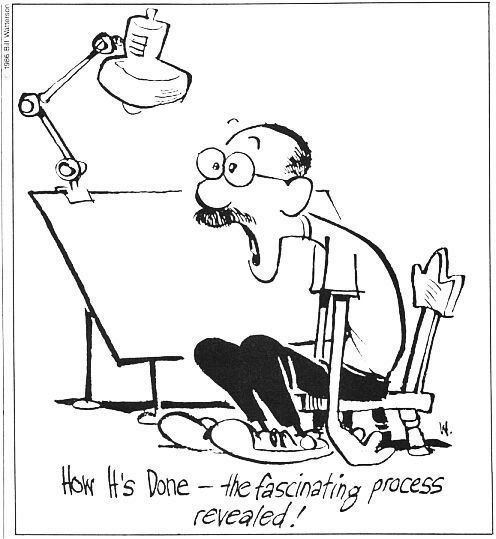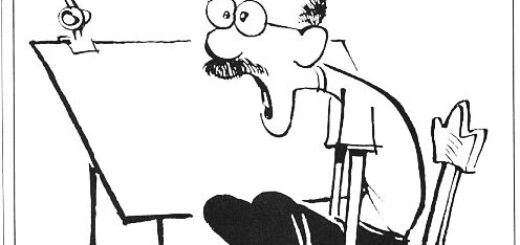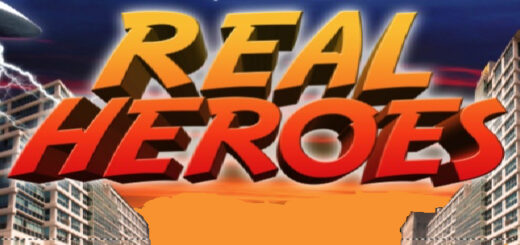Marvel’s Daredevil premiered on Netflix on Friday, April 10. All 13 episodes went up at once, which is great both for binge-watchers (a.k.a. people who just really like long-form storytelling, okay??) like me; and also for Marvel’s presumed need to establish key but new-to-MCU characters before Captain America: Civil War, which hits theaters May 6, 2016.
Of course, we don’t actually know if Daredevil will show up in Civil War, even if the show appears to have teased the Civil War plot. Oddly enough, as of two weeks ago, Daredevil star Charlie Cox said he hadn’t been “invited to that party.” On the other hand, it seems like Civil War would be the perfect movie in which to tie the Marvel movies and TV shows even more tightly together. Given we already have connections in Agents of S.H.I.E.L.D., and the next planned Marvel Netflix shows will star Luke Cage, Jessica Jones, Iron Fist, and The Defenders (to include, perhaps, appearances by MCU characters we’ll have seen by then like Ant-Man, Doctor Strange, and The Hulk?), it should be a no-brainer (and almost necessary) for Marvel to include relevant TV characters in the larger-scale Civil War movie, and perhaps cameos for any stars of the Netflix shows who haven’t made it to TV yet by May of 2016.
But I guess even if we don’t see all the TV characters in the movies by Civil War, it still gives watchers a foundation of MCU character knowledge for those superheroes if they are referenced in the plot. Of course, having all of these TV shows means to truly be caught up on the MCU you now have to watch both the Marvel movies and the TV shows; but fortunately, at least so far, that’s no hardship. (And it can make for fun Easter egg hunting in both movies and shows. Another cool one from Daredevil is the newspaper headline for the “Battle of NY” in Ben Urich’s office, as well as the script’s indication that Wilson Fisk’s rise to power is built on the destruction that took place during The Avengers movie.)
With Agent Carter having had a great eight episode run (that show is so much fun), and Agents of S.H.I.E.L.D. continuing to be a fan favorite, Daredevil has come in as the newest addition to TV, and it is really good. As teased previously, it is definitely darker and grittier than some of Marvel’s fare, with a hint of a noir feel; but then, I’ve always associated that aesthetic with Daredevil anyway. One of the things I enjoy about the Daredevil stories is the exploration of the microcosm of Hell’s Kitchen and its resident vigilante. The comic has always had a sort of small town/big city feel to it because of how deeply Daredevil is rooted in that one neighborhood, Matt Murdock’s history there, and his desire to make at least his little corner of the world a cleaner place. Even Daredevil’s nemesis, the Kingpin, while his business may spread through New York and beyond, is rooted in the darker, slummier parts of the city. That keeps the comic true to its gritty NYC roots even as the storylines change.
The show overall evokes a dark and sometimes meditative mood, although it’s not lacking in great action scenes, whether they be while Daredevil is fighting villains, or when the Kingpin’s violent urges overcome his generally calm demeanor. Speaking of the Kingpin, he is portrayed here in a wonderfully complex manner by one of my long-time favorite actors, Vincent D’Onofrio. One thing I really like about Daredevil is that it’s not a black-and-white show. It humanizes the villains to some extent; such as when it shows the to-the-death devotion between the Russian Ranskahov brothers, and a peek into the difficult past that led them to their position at the show’s start. Nowhere is this humanization more well done than with Wilson Fisk, the Kingpin. He is in equal parts a sympathetic villain and truly chilling, and D’Onofrio manages to continually evoke the feeling that with this man, “still waters run deep” and beneath the surface there is a well of complex emotions coupled with his terrifying rage. In the comics, the Kingpin, despite his low origins, publicly attempts to appear as an educated man, and is portrayed as an entrepreneurial villain.
This comes across in the TV script, in lines such as, “Problems are just opportunities that have not presented themselves,” and in his business dealings and his romancing of Vanessa in fancy restaurants, with wines recommended by his assistant. The series also shows the rise of the Kingpin’s obsession with Daredevil, which eventually leads to the seminal comics storyline in which Fisk exposes Murdock as Daredevil and ruins his life and reputation.
Despite dark villains like Fisk, the show retains that humorous edge that defines the modern MCU. One of the best sources of this in Daredevil is Murdock’s best bud Foggy Nelson, who is portrayed perfectly by Elden Henson. I’ve always had a soft spot for Foggy (also played well by Jon Favreau in the 2003 Daredevil movie), who is generally portrayed as being good natured, loyal, and with a good heart. The show does well in using him to inject some levity into the show, without turning him into too much of a goofy comic foil. He’s also a great contrast to the more serious Murdock, and a means for the story to show how Daredevil’s vigilante identity creates difficulties in his “normal” life and in being there for his friends.
One thing I really like about this show is the portrayal of how normal people deal with the superhero/vigilante elements in their world. Two other characters that add a great deal to Daredevil in this aspect are Claire Temple (serving in the role of the Night Nurse), and Ben Urich, the tenacious investigative reporter for The New York Bulletin (rather than The Daily Bugle, as in the comics). The script-writers have managed to make these two characters (played by Rosario Dawson and Vondie Curtis-Hall, respectively) both well-rounded supporting characters, and windows through which viewers can experience how someone might deal with being a “mundane” in a world of heroes and vigilantes. (Such as when Ben Urich says that, “[i]n my experience, there are no heroes; no villains; just people with different agendas.”) I love it when shows manage to successfully convey multiple viewpoints like that.
Of course, a main viewpoint is obviously Daredevil’s, and Charlie Cox does a great job in his dual role as Murdock and his vigilante alter-ego. The show does well to start with a Murdock who wants to make the streets a safer place but is pretty clueless about what’s actually going on out there, and gradually sleuths out the corruption in the NYPD and the existence of a greater criminal network. It also gives an interesting perspective on his views of the law, and how they interplay with his role as a costumed vigilante. Flashbacks to his childhood in Hell’s Kitchen add to the story, and also provide us with a few more fun Easter eggs, such as the mention (and poster) of Carl “Crusher” Creel’s boxing match against Murdock’s father, Battlin’ Jack Murdock; Creel has previously been seen in the MCU as The Absorbing Man on Agents of S.H.I.E.L.D.
Overall, I think Daredevil makes a great addition to the MCU, and look forward to seeing how the future Netflix shows pan out and how they all tie in to each other and to the greater MCU as time goes on. It seems like I’m not alone in this. The show has garnered mostly good reviews thus far; and I’d agree with James Gunn (writer-director of Guardians of the Galaxy), who opined on Facebook that “this character I loved so much for so long ha[s] been brought to television with such spirit, love, and care.”
Of course, it’s always nice to get the “person on the street” viewpoint as well; and since I started my Daredevil Netflix binge with a Daredevil Watch Party of me and three friends and assigned them the homework of telling me what they think of the show, I’ll provide their perspectives here as well:
Friend 1: “More than any superhero adaptation I’ve seen recently, Daredevil works independent of its mythos. I find myself wanting to watch it for more than just the really cool fight scenes (which are really cool) and the comic references. Instead, the well-written dialogue and excellent chemistry between the lead actors will keep me coming back for more. I am just as interested to learn about Matt Murdock the lawyer as Daredevil the superhero.
Daredevil is not perfect. I think the creators are sometimes, to the detriment of the plot, overly enthusiastic about no longer having to deal with television censors. However, I am really looking forward to finishing the season.”
Friend 2: “I think Daredevil did a really good job of introducing an outsider (me) and someone who doesn’t generally care for Big Two superheroes (also me) to what is undoubtedly an unholy tangled mess of continuity and backstory without info dumping or becoming utterly impenetrable.”
Friend 3: “The Netflix adaptation of Daredevil has the potential to be the comic world’s answer to The Wire drama on HBO. Daredevil is a crime drama that shows every tier of decay in the post-industrial American city – from the streets to the courtrooms and the newsrooms. Vincent D’Onofrio does a credit to his hometown of Brooklyn by portraying New York crime lord Kingpin as a calculating but very human villain. His performance shows why Kingpin is a more compelling villain than his equally bald DC Comics doppelganger Lex Luthor.”
So there you have it, folks; if you haven’t checked out Daredevil yet, I and my three friends and a bunch of other people on the internets liked it a lot; and I bet you will too. So lay in the popcorn, get comfy, and when you’re done with it, tell me what you think, and Servo Lectio!
 I just returned from a week’s vacation out in the sort-of-middle-of-nowhere, and it was glorious. Being my first long non-family or -convention-related vacation in ten years, it gave me some much needed down time to, e.g., work on my non-journalistic writing (along with spending time with a wonderful friend and meeting new friends, reminding myself anew of how terrible I am at watercolor painting, reading the exceptional journalistic work of Ernie Pyle, getting a tad bit in shape, listening to excellent music really loudly through gorgeously immense speakers, stepping out into the sun more than I usually do in my office-bound work, and, you know, actually relaxing a bit).
I just returned from a week’s vacation out in the sort-of-middle-of-nowhere, and it was glorious. Being my first long non-family or -convention-related vacation in ten years, it gave me some much needed down time to, e.g., work on my non-journalistic writing (along with spending time with a wonderful friend and meeting new friends, reminding myself anew of how terrible I am at watercolor painting, reading the exceptional journalistic work of Ernie Pyle, getting a tad bit in shape, listening to excellent music really loudly through gorgeously immense speakers, stepping out into the sun more than I usually do in my office-bound work, and, you know, actually relaxing a bit).





















